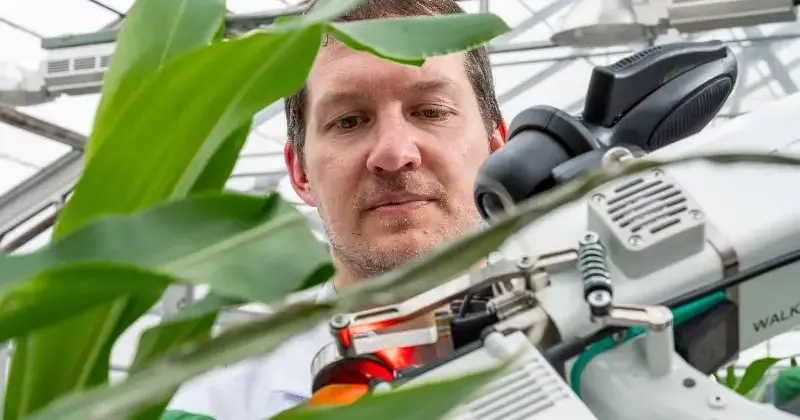
Revolutionary Discovery: How a 'Wasteful' Plant Process Produces Key Prenatal Vitamin
2025-09-05
Author: Li
A Game-Changer in Prenatal Nutrition
In a groundbreaking study from Michigan State University, researchers have uncovered that photorespiration, a process traditionally deemed wasteful, is actually vital for producing folates, including the essential vitamin B9 known for its critical role in preventing birth defects.
What's the Link Between Photorespiration and Folates?
For the very first time, scientists have quantified the carbon flow through photorespiration specifically for folate production. Led by MSU's Berkley Walker, the study reveals that around 6% of the carbon absorbed by plants is channeled into creating these vital nutrients. However, when photorespiration is inhibited, this number plummets dramatically to just 1%.
The Implications of This Research
Published in the prestigious journal *Nature Plants*, these findings not only pave the way for scientists to potentially engineer plants that enhance nutrient production but also highlight alarming repercussions of climate change, such as reduced plant nutrition due to rising carbon dioxide levels.
"In regions where rice is a staple, less nutritious crops pose a significant concern," stated Walker, an associate professor at the MSU-DOE Plant Research Laboratory. "The complexity of how plants react to climate change could be pivotal in our future agricultural strategies."
How Do Plants Make Their Own Food?
Plants essentially function as factories that convert sunlight, water, and carbon dioxide into the sugars that fuel their growth. The enzyme rubisco acts as the chief operator, grabbing CO2 for production. However, if rubisco mistakenly binds with oxygen, it creates a toxicity issue requiring a recycling process known as photorespiration.
This process has long been suspected to support folate synthesis, but until now, its exact contributions remained a mystery.
Innovative Research Techniques
To illuminate this critical process, Walker's lab employed a common model plant, Arabidopsis thaliana, under varying conditions of photorespiration. By wielding an infrared gas analyzer and rapid nitrogen freezing techniques for leaf testing, they meticulously tracked CO2 levels and chemical changes over time.
The Future of Nutrient-Rich Crops
The startling results show a potential decline in folate production in a high CO2 environment, which could jeopardize prenatal nutrition—vitamin B9 is crucial during pregnancy for reducing neural tube defects. Walker emphasized, "Understanding how nature synthesizes this vitamin allows us to engineer nutrient-rich crops, which is essential in cultures lacking easy access to supplements."
Next Steps for Research
The next phase of the Walker lab's research will involve testing similar conditions on outdoor-grown crops to verify whether these trends hold true in real-world settings. This project, funded by the National Science Foundation, exemplifies critical research that will lay the groundwork for revolutionary advancements in agriculture.
Walker concluded, "We must build our understanding of plant processes to engineer crops that will thrive in the future. Without this foundational knowledge, we risk falling short in addressing upcoming agricultural challenges."



 Brasil (PT)
Brasil (PT)
 Canada (EN)
Canada (EN)
 Chile (ES)
Chile (ES)
 Česko (CS)
Česko (CS)
 대한민국 (KO)
대한민국 (KO)
 España (ES)
España (ES)
 France (FR)
France (FR)
 Hong Kong (EN)
Hong Kong (EN)
 Italia (IT)
Italia (IT)
 日本 (JA)
日本 (JA)
 Magyarország (HU)
Magyarország (HU)
 Norge (NO)
Norge (NO)
 Polska (PL)
Polska (PL)
 Schweiz (DE)
Schweiz (DE)
 Singapore (EN)
Singapore (EN)
 Sverige (SV)
Sverige (SV)
 Suomi (FI)
Suomi (FI)
 Türkiye (TR)
Türkiye (TR)
 الإمارات العربية المتحدة (AR)
الإمارات العربية المتحدة (AR)